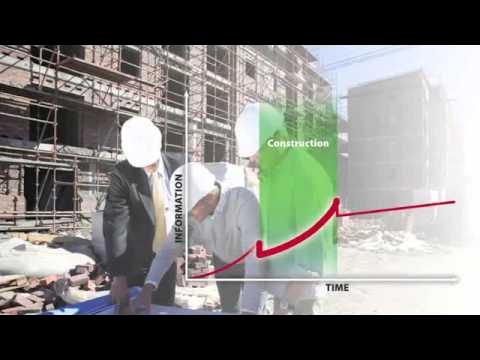The Argument for VR Modelling in the Automotive industry.
Summary
TLDRNick Gravely's presentation explores the evolution of automotive design, shifting from traditional clay modeling to VR concept modeling. He discusses challenges in current workflows and how VR addresses them, enhancing collaboration and efficiency. The presentation highlights VR's potential to revolutionize design, reduce development time and costs, and offers a future where digital and physical modeling coexist, with a call to action for the industry to embrace this innovation.
Takeaways
- 🚗 VR modeling is revolutionizing the automotive industry by addressing inefficiencies in traditional clay and digital workflows.
- 🎨 Nick Gravely, with over 20 years of experience, emphasizes the decline in demand for clay modelers and the shift toward digital concept modeling in tools like Blender and Alias.
- 🕶️ In 2020, the Oculus Quest 2 VR headset, paired with tools like Gravity Sketch, enabled effective VR concept modeling for automotive designs.
- 🚀 New automotive trends such as electric drivetrains and autonomous vehicles are pressuring companies to adopt faster, more efficient design processes.
- 💻 VR modeling solves the disconnect between 2D digital creation and 3D review, where many issues only emerge after moving from 2D to 3D environments.
- 🏎️ Designers can now work directly in 3D space through VR, improving collaboration and decision-making during the creative process.
- 💡 VR modeling reduces design development time and cost by over 50%, according to consulting firm Kearney.
- 📉 Traditional clay models are still valuable but are now often used for final verification, with much of the design process moving into VR.
- 🔧 Tools like Gravity Sketch allow designers to import 2D sketches, turn them into 3D models, and collaborate in real-time within a VR environment.
- 🎯 To successfully implement VR modeling, companies should experiment with small concept modeling projects and train their workforce in VR tools.
Q & A
What is the main focus of the presentation?
-The main focus of the presentation is on using VR modeling for the automotive industry, addressing current workflows, and how VR can improve concept modeling processes by reducing time and costs.
Who is the presenter and what is their background?
-The presenter is Nick Gravely, who has a 20-year career as a clay modeler in the automotive and motorcycle industries. He is now focused on promoting VR modeling as a more efficient method in design workflows.
What has caused the decreasing demand for clay modelers in the automotive industry?
-The decreasing demand for clay modelers is due to the shift towards digital tools such as Blender and Alias for concept modeling, leaving clay modelers primarily to clean up milled clay models rather than contribute to the creative process.
What significant change did Nick Gravely experience in 2020?
-In 2020, Nick Gravely began using the Oculus Quest 2 VR headset and experimented with VR modeling tools like Gravity Sketch, which allowed him to create and edit in 3D environments, marking a pivotal shift in his approach to modeling.
How does VR modeling benefit automotive design development?
-VR modeling offers several benefits, including faster project completion, lower costs, improved collaboration between departments, and more informed design decisions due to real-time 3D visualization and interaction with models.
What are some of the limitations of traditional 2D and 3D design workflows?
-Traditional 2D workflows lead to frequent back-and-forth between 2D and 3D reviews, often missing 3D design problems until later stages. Designers also lose the tactile experience of understanding 3D forms, leading to less informed decisions.
How does VR modeling compare to traditional clay modeling and 2D CAD in terms of cost and speed?
-According to the presentation, VR modeling is significantly faster and more cost-effective than traditional clay modeling, which is slow and expensive. It also surpasses 2D CAD in terms of 3D form understanding and design refinement.
How does VR modeling affect collaboration during the design process?
-VR modeling enhances collaboration by allowing multiple stakeholders to view and interact with the design model in real-time, even remotely. This eliminates barriers like geographic distance and the need for physical model sessions.
What role do clay modelers play in the new VR modeling workflow?
-In the VR modeling workflow, clay modelers can pivot their skills to digital craftsmanship in 3D environments, using their deep understanding of form and proportions to enhance VR models, creating a more collaborative and creative process.
What are some challenges in adopting VR modeling, and how can they be addressed?
-Challenges in adopting VR modeling include data security concerns and the need for new hardware and software. These can be addressed by using secure servers like those of Gravity Sketch and providing training for the workforce to adapt to the new tools.
Outlines

This section is available to paid users only. Please upgrade to access this part.
Upgrade NowMindmap

This section is available to paid users only. Please upgrade to access this part.
Upgrade NowKeywords

This section is available to paid users only. Please upgrade to access this part.
Upgrade NowHighlights

This section is available to paid users only. Please upgrade to access this part.
Upgrade NowTranscripts

This section is available to paid users only. Please upgrade to access this part.
Upgrade NowBrowse More Related Video

Inside GM’s Newly Updated $2B ‘Willy Wonka Factory for Car Design’ | WSJ Open Office

Analyzing and modeling complex and big data | Professor Maria Fasli | TEDxUniversityofEssex

The Evolution of Drafting

The Evolution of Drafting

16. Representing Knowledge In Taxonomies And Ontologies

WISPO2020_PE 002_Spira Mirabilis 2 Optimizing the Performance of Logarithmic Spiral Wind Turbine
5.0 / 5 (0 votes)